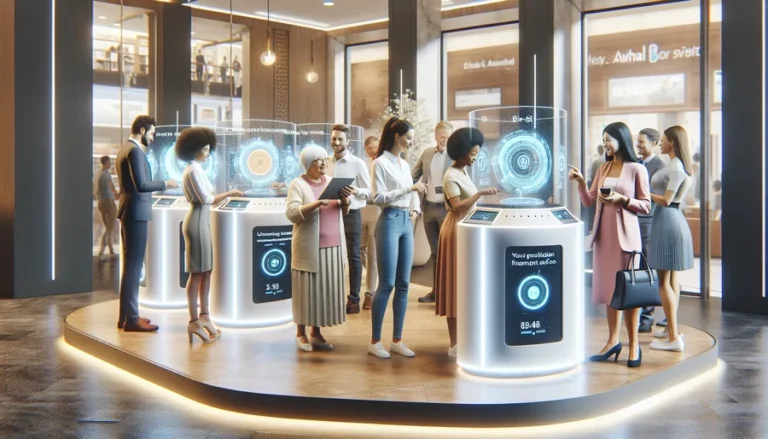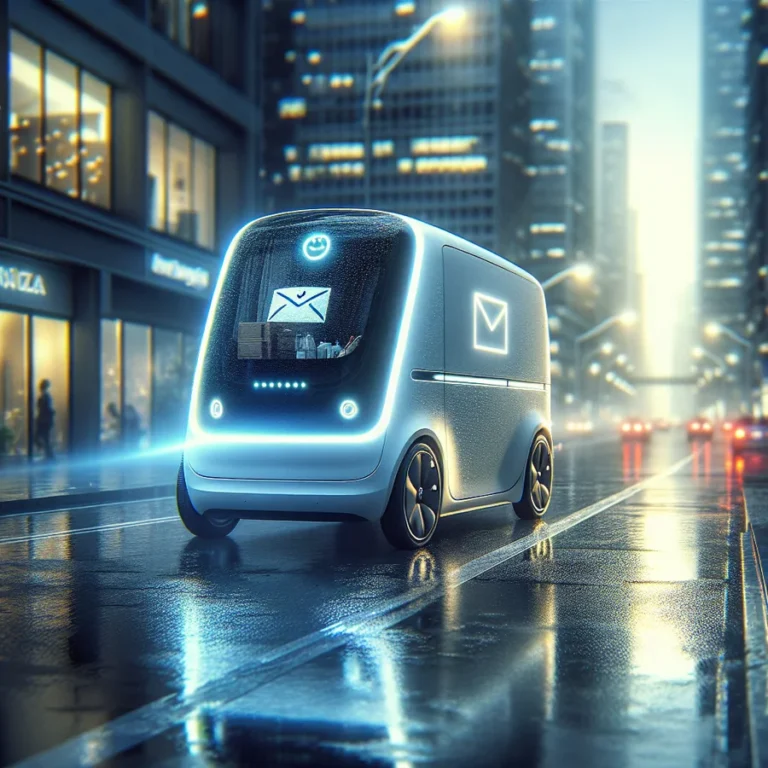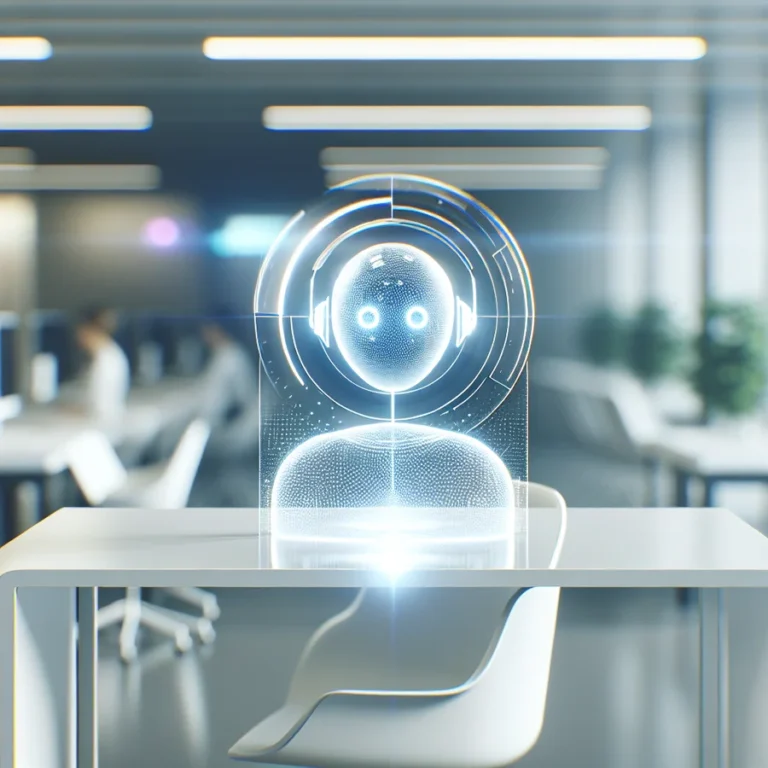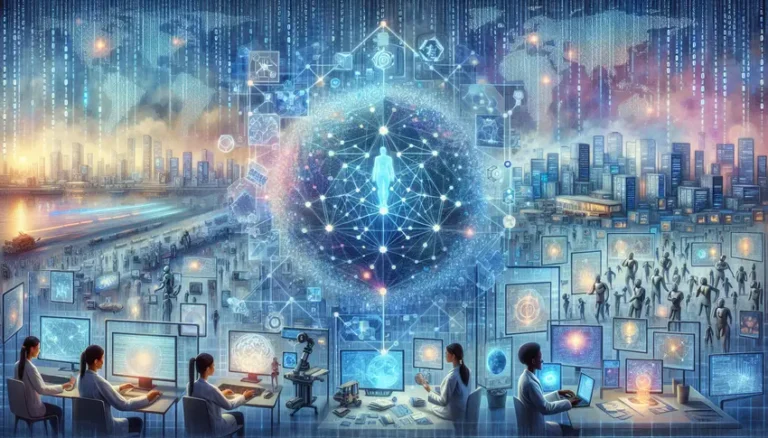AI in Human Resources: Enhancing Recruitment and Employee Engagement
Are you ready to discover how Artificial Intelligence (AI) is changing Human Resources (HR)? AI is no longer a futuristic concept. It’s here, and it’s transforming how companies recruit, engage, and develop their employees. This guide will explore how AI in Human Resources is revolutionizing the workplace, making HR processes more efficient and effective.
In today’s fast-paced world, HR departments are constantly looking for ways to streamline operations and improve employee experiences. AI in Human Resources offers powerful solutions, from automating repetitive tasks to providing data-driven insights that enhance decision-making. Let’s dive into the exciting ways AI is reshaping HR and how you can leverage these technologies to create a better work environment.
Understanding the Impact of AI in Human Resources
AI is making waves in HR. It’s not just about automation. It’s about making smarter decisions, improving employee satisfaction, and creating a more efficient and productive workplace. Let’s break down the key benefits and areas where AI is having the biggest impact.
What is AI in HR?
AI in HR refers to using artificial intelligence technologies to improve HR processes. This includes optimizing decision-making and providing actionable insights. AI helps automate repetitive tasks, analyze data at scale, and offer faster, smarter, and more inclusive solutions. It’s about leveraging data to make informed decisions and creating agile organizations.
Note: AI in HR is not about replacing human interaction. It’s about augmenting human capabilities and freeing up HR professionals to focus on strategic initiatives.
Benefits of AI in Human Resources
There are many advantages to using AI in HR. Here are some of the most significant:
- Increased Efficiency: AI automates time-consuming tasks like data entry, scheduling, and initial candidate screening. This reduces the workload for HR teams.
- Improved Decision-Making: Data-driven insights from AI tools empower HR leaders to make more informed decisions. This includes recruitment, employee performance, and workforce planning.
- Enhanced Employee Experience: AI supports engagement initiatives, well-being programs, and personalized onboarding. This ensures employees receive consistent and customized support.
- Reduction of Errors: Automating routine tasks minimizes human error, especially in data management and payroll. This ensures greater accuracy and compliance.
- Streamlined Recruitment Process: AI-driven tools improve talent acquisition by accelerating sourcing, screening, and interviewing. This helps HR teams find the right candidates faster.
- Better Talent Retention: Predictive analytics identify retention risks early on. This enables HR teams to proactively implement strategies to retain top talent.
- Higher Productivity: By taking over mundane tasks, AI allows HR professionals to focus on more strategic activities. This contributes to organizational growth.
- Personalized Learning and Development: AI can identify skill gaps and tailor learning experiences to individual needs. This supports continuous growth and helps employees upskill or reskill.
- Enhanced Workforce Planning: With predictive analytics, HR teams can forecast staffing needs more accurately. This allows for better planning and resource allocation.
- Competitive Advantage: Organizations that leverage AI in HR functions are often more agile, data-informed, and efficient. This gives them an edge in attracting and retaining talent.
In short, AI helps HR departments operate at a higher level of strategic value. It streamlines workflows, reduces errors, and enhances HR processes overall. This provides HR teams with a competitive advantage and helps them drive continuous improvement.
Key Areas Where AI is Revolutionizing HR
AI is transforming HR in several key areas. Let’s explore these areas in more detail:
Talent Acquisition and Recruitment with AI
Hiring can be time-consuming and costly. AI technology streamlines the recruitment process by improving every stage of sourcing, screening, and assessing candidates. HR professionals can leverage AI to manage large applicant pools, reduce bias, and enhance the overall hiring process. AI-driven tools also allow HR managers to create optimized job descriptions that attract the right talent.
Here are the top ways AI can be used in recruiting:
- Sourcing Candidates: AI enables HR professionals to find candidates more effectively. It identifies those who match specific criteria on platforms like LinkedIn.
- Screening Resumes: AI algorithms quickly sift through resumes. They rank candidates based on qualifications, experience, and other criteria.
- Using Chatbots: Chatbots handle initial interactions, answer common questions, and even assess candidates’ skills. This happens before moving them to the next stage.
- Automating Assessments: AI-powered tools provide HR teams with data-driven insights into candidates’ strengths, skills, and cultural fit.
The recruitment process has become more efficient and data-driven with AI tools. This allows HR teams to make smarter hiring decisions and engage potential hires in a way that improves their overall experience.
Onboarding New Hires with AI
Onboarding is a critical step for HR departments. It sets the foundation for new employees’ experience in the company. AI tools improve the onboarding process by automating administrative tasks, providing real-time support, and delivering personalized onboarding experiences.
AI applications in onboarding not only make the process faster but also help HR teams create a welcoming environment. This enhances retention. Here are some examples:
- Automating Administrative Tasks: AI takes over repetitive tasks such as document completion, scheduling, and compliance training.
- Using Chatbots for Support: Chatbots answer new hires’ questions around the clock. They cover topics like benefits, company policies, and job responsibilities.
- Creating Personalized Journeys: AI customizes onboarding to each employee. This helps them learn at their own pace and focus on areas that matter most for their role.
AI-powered onboarding helps HR departments efficiently transition new hires into their roles. It makes them feel supported from day one. By automating the onboarding process, HR leaders can ensure consistency while also giving new hires a positive, engaging experience.
Enhancing Employee Engagement and Experience with AI
A productive and satisfied workforce is key to a company’s success. AI-driven tools are helping HR departments monitor and improve employee engagement. AI enables HR professionals to use predictive analytics to gather real-time feedback, identify areas for improvement, and implement initiatives that boost well-being and job satisfaction.
By enhancing the employee experience, HR leaders can increase engagement, productivity, and retention. Here are some ways HR professionals can use AI to enhance the employee experience:
- Gathering Feedback in Real-Time: AI tools collect regular feedback through surveys and sentiment analysis. This provides insights into employee morale and engagement.
- Identifying Trends and Potential Issues: Predictive analytics enables HR teams to see engagement patterns. This allows them to address issues before they impact productivity.
- Designing Well-Being Initiatives: AI helps HR departments create well-being programs tailored to employees’ needs. This supports both physical and mental health.
By leveraging AI to enhance employee experience, HR leaders can build a workplace where employees feel valued and motivated. Improved employee engagement can significantly impact retention and performance across all levels of the organization.
Supporting Learning, Development, and Upskilling with AI
AI is essential in modern learning and development. It identifies skill gaps, provides personalized learning journeys, and supports continuous upskilling. By leveraging machine learning algorithms, HR managers can monitor employee progress and track the effectiveness of learning programs. Generative AI even allows HR teams to create custom training content tailored to their workforce.
Here are the top ways AI can be used in L&D:
- Identifying Skills Gaps: AI highlights areas where employees may need further training or development. This helps HR plan effective learning strategies.
- Creating Personalized Learning Journeys: AI tools deliver training that matches individual learning styles. This ensures employees gain the necessary skills for their roles.
- Supporting Upskilling and Reskilling: AI-driven platforms make it easy for HR departments to offer upskilling and reskilling opportunities. This keeps employees equipped to meet changing job requirements.
- Tracking Performance in Real-Time: Machine learning algorithms track employee progress and provide insights into the effectiveness of each learning program.
With AI tools for learning and development, HR professionals can support employees’ career growth and create a culture of continuous improvement. This proactive approach to development enhances employee performance and readiness for future roles.
Transforming Performance Management and Retention with AI
AI has transformed performance management. It helps HR departments set data-driven benchmarks, automate performance reviews, and identify factors that may affect employee retention. With predictive analytics, HR leaders can create a retention strategy that minimizes turnover and supports long-term business goals.
Here are some ways AI can be used in performance management:
- Automating Performance Reviews: AI tools streamline performance reviews by analyzing employee data. This highlights strengths and areas for improvement.
- Setting Performance Benchmarks: AI helps HR teams define clear performance goals that are fair, measurable, and aligned with company objectives.
- Predicting Retention Risks: Predictive analytics identifies potential retention risks by analyzing data on job satisfaction, engagement, and other factors.
By implementing AI-driven performance management, HR professionals can foster a culture of transparency and support. This encourages employees to stay and grow within the company.
Workforce Planning and Data-Driven Decision-Making with AI
Effective workforce planning is essential for HR departments. AI plays a key role in optimizing this process. By analyzing datasets, AI helps HR leaders forecast staffing needs, allocate resources efficiently, and make informed decisions that support long-term growth.
Explore a few ways AI can be used in planning and decision-making:
- Forecasting Staffing Needs: AI tools use historical data to predict staffing requirements. This allows HR managers to plan proactively.
- Improving Resource Allocation: AI provides data-driven insights that help HR teams distribute resources effectively.
- Supporting Informed Decisions: With data-driven decision-making, HR leaders can respond quickly to market changes and organizational needs.
Data-driven workforce planning with AI allows HR departments to be more agile and adaptable. This helps them meet organizational needs in a rapidly evolving job market.
AI Tools and Technologies in Human Resources
AI technology offers HR professionals a powerful set of tools. These tools streamline functions, make data-driven decisions, and improve employee experience. From candidate sourcing and performance management to personalized employee support, AI tools are transforming the way HR departments operate. Here’s a closer look at specific tools that can drive efficiency and impact in HR.
- IBM Watson: Offers a suite of AI-powered tools that support HR functions, including talent acquisition, employee engagement, and workforce planning. It provides advanced analytics for recruitment and predictive insights for engagement.
- ChatGPT: A conversational AI tool that can interact with users in a natural, human-like way. HR departments use ChatGPT to automate responses to employee questions and provide real-time support during onboarding.
- HireVue: A video interview and assessment platform that leverages AI to screen and evaluate candidates. Its AI capabilities analyze video interviews, providing insights into candidates’ skills, behavior, and cultural fit.
- Eightfold.ai: An AI-driven talent management platform that assists with recruiting, retaining, and developing talent. It uses deep learning to match candidates to jobs based on their skills and career trajectories.
- Visier: An analytics platform tailored to HR that provides data-driven insights into workforce planning, retention, and engagement. It enables HR leaders to make data-backed decisions.
- Pymetrics: Uses neuroscience-based assessments and AI to match candidates with roles suited to their skills and personalities. It evaluates candidates’ cognitive and emotional traits through game-based assessments.
- ADP DataCloud: An analytics platform for workforce data, helping HR departments with payroll, time tracking, and HR analytics. It integrates with other HR platforms to streamline administrative tasks.
- Workday: A comprehensive HR management system with AI capabilities for talent management, payroll, and workforce analytics. Its AI-driven features assist with recruitment, performance reviews, and employee development.
- HiredScore: An AI-powered recruitment platform that uses natural language processing and machine learning to screen candidates and prioritize applications. It integrates with ATS systems, analyzing resumes and ranking candidates for recruiters.
How AI is Used in Human Resources: Practical Applications
Let’s look at some specific ways AI is being used in HR today:
- Recruiting: AI analyzes resumes, matches them to job descriptions, and identifies ideal candidates from online resources. It streamlines evaluation processes through automated video interviews and personality assessments.
- Performance Reviews: AI tracks and analyzes employee data throughout the year. It provides comprehensive reports highlighting individual strengths, areas for improvement, and progress over time. This ensures fairer evaluations.
- Employee Onboarding/Offboarding Processes: AI guides newcomers through necessary forms and policies. It helps schedule initial training sessions, reducing stress levels during this crucial period. When an employee leaves, AI manages exit surveys and return of company property.
- Employee Engagement Initiatives: AI-powered survey tools automate feedback surveys. This provides actionable insights to improve overall satisfaction.
- Talent Development and Training: AI personalizes learning and development for employees. It recommends specific training courses, webinars, or workshops based on their skills and career ambitions.
- Workforce Planning: AI analyzes data such as current workforce skills, industry trends, and company growth plans. It predicts which roles might need to be filled in the next year.
- HR Chatbots and Virtual Assistants: AI chatbots serve as 24/7 HR assistants. Employees can ask the chatbot questions about leave policies, benefits, and more.
AI in HR Practices: Transforming Talent Strategies
AI is transforming how organizations recruit, manage talent, and engage employees. From reducing hiring biases to mapping workforce skills and predicting future needs, AI-powered tools are enabling HR professionals to streamline processes and make data-driven decisions.
AI in HR Practices Definition
AI in HR practices refers to the application of AI technologies to improve HR processes, optimize decision-making, and provide actionable insights. AI is transforming HR by automating repetitive tasks, analyzing data at scale, and offering solutions that are faster, smarter, and more inclusive.
The Stages of AI in HR: An Evolution Since the 2010s
AI in HR has evolved significantly since the 2010s, enhancing efficiency, decision-making, and employee experiences. Here’s a brief overview:
- 2010–2014: Automation and Data Analytics: AI automated essential administrative tasks like resume screening and addressing candidate FAQs.
- 2015–2017: Predictive Analytics and Personalization: AI predicted employee turnover, enhanced talent acquisition, and provided personalized learning and development.
- 2018–2020: Integration into HR Systems: AI played a bigger role in HR platforms, making it easier to manage skills, boost employee engagement, and support ongoing performance feedback.
- 2021–Present: Strategic HR and Talent Experience: AI is now at the forefront of talent experience platforms, delivering powerful skills-based matching, driving enhanced diversity initiatives, and providing real-time performance insights.
Revolutionizing Recruitment with AI
AI transforms the hiring landscape by analyzing resumes, LinkedIn profiles, and job descriptions, emphasizing candidates’ skills over traditional qualifications. This innovative approach empowers organizations to discover hidden talent pools and connect individuals with roles they may have never imagined for themselves.
Transforming Talent Management with AI
AI enables HR to design development plans that are personalized to each employee’s skill set and career goals, increasing employee satisfaction and retention. Companies that have adopted AI for employee development report a 25% increase in employee satisfaction and engagement.
Enhancing Employee Engagement with AI
AI tools meticulously examine employee feedback gathered from various sources, including surveys, emails, and other communication channels. By analyzing this data, these tools provide valuable insights into overall employee morale, allowing organizations to pinpoint specific engagement issues and understand the factors that affect their workforce’s satisfaction and productivity.
Addressing Challenges with Transparent AI
It’s important to address the challenges that come with using AI in HR. Here are some key considerations:
- Ensuring Ethical AI Practices: Organizations must ensure that their AI tools are transparent, explainable, and compliant with data privacy regulations. Trust in AI depends on the ability of HR leaders to validate and explain AI-driven decisions.
- Balancing Automation with Human Oversight: AI should complement human expertise, not replace it. While AI offers valuable insights, the final decision-making process should remain in the hands of HR professionals.
The Future of HR: Embracing a Skills-First Mindset
In a fast-changing business environment, skills-based strategies enable organizations to adapt quickly and stay competitive. According to Deloitte, 63% of business and HR executives report alignment on the importance of skills in making decisions about work and the workforce.
Conclusion
AI in Human Resources is not just a trend; it’s a fundamental shift in how HR operates. By embracing AI, HR departments can streamline processes, make data-driven decisions, and enhance the employee experience. From recruitment to performance management, AI offers powerful solutions that can transform the workplace. As technology continues to evolve, staying informed and adapting to these changes will be crucial for HR professionals looking to create a more efficient, engaged, and productive workforce.
FAQs About AI in Human Resources
How is AI used in recruitment processes?
AI analyzes resumes, matches them to job descriptions, identifies ideal candidates from online resources, and streamlines evaluation processes through automated video interviews and personality assessments.
How is AI used in performance reviews?
By tracking and analyzing employee data throughout the year, AI provides comprehensive reports highlighting individual strengths, areas for improvement, and progress over time, ensuring fairer evaluations.
Why is AI onboarding good for new hires?
AI guides newcomers through necessary forms and policies while helping schedule initial training sessions, reducing stress levels during this crucial period of acclimating within a company culture.
Why should companies adopt AI survey tools?
Automated feedback surveys ensure unbiased reporting by employees that provide actionable insights to improve overall satisfaction.
Can workforce planning be improved using AI technology?
Using collected data on current workforce skills trends along with industry analysis can optimize future hiring procedures tailored specifically around identified gaps or needs specific to each business case scenario at hand.






